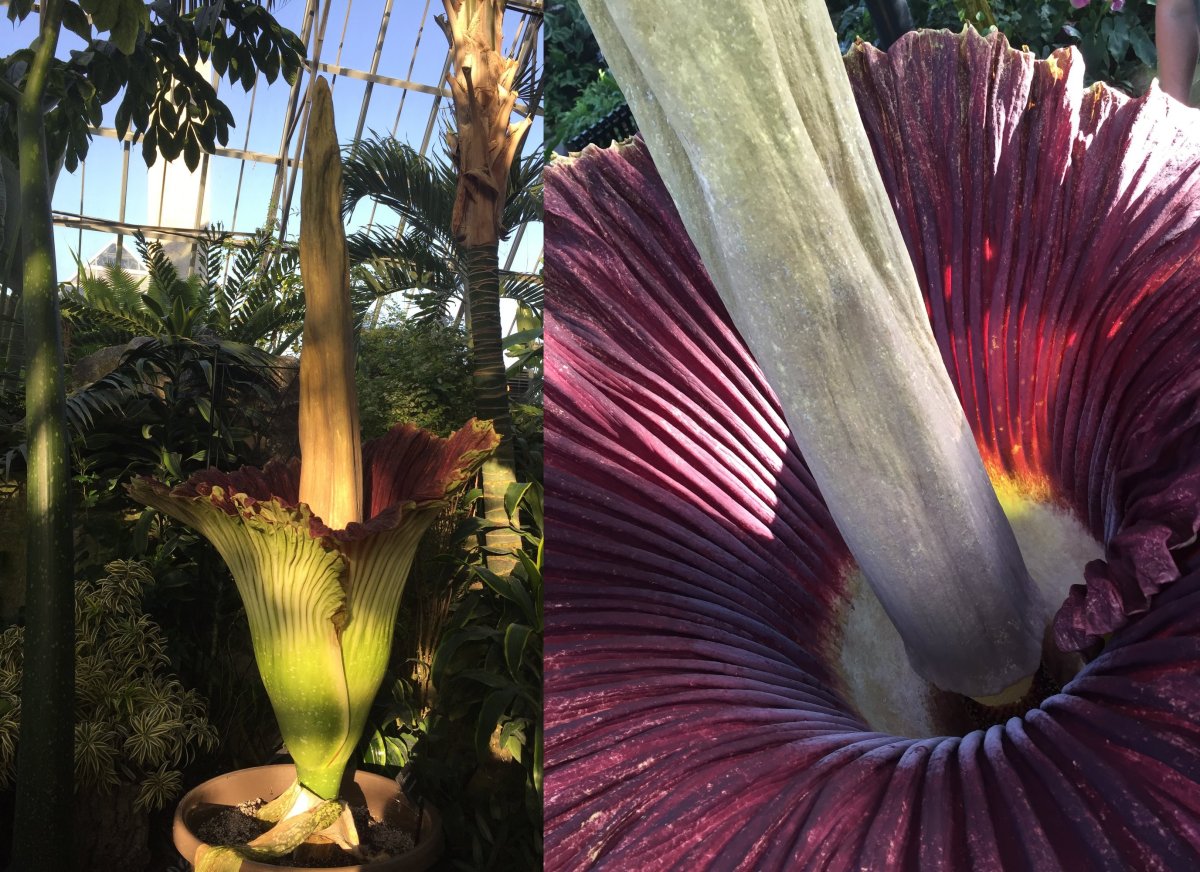Fancy a whiff of rotting meat?

It’s a question most people would quickly answer ‘no’ to, but not this week at Vancouver’s Blodel Conservatory.
The facility is currently displaying a rare corpse flower — a species of plant that only flowers once every two to 10 years. And when it does, you’d better plug your nose.
Listen: Corpse flower set to bloom at Blodel Conservatory
“It’s supposed to smell horrendous,” Bruce McDonald, superintendent at the Blodel Conservatory and Sunset Nursery, told CKNW’s The Simi Sara Show.
“I’ve smelled rotting meat in a garbage can before, and if it smells worse than that I’m a little alarmed.”
Indeed, the aroma of a corpse flower, or Amorphophallus titanum, in bloom has been said to evoke notes of discarded diapers or hot garbage.
But that’s not keeping the public away. MacDonald said that while the flower has not actually bloomed yet, there’s already been been a boost in attendance from people coming to check out the unusual plant.
WATCH: Crowds flock to ‘corpse flower’

“Everybody seems to have this morbid curiosity about it and coming to see it; it’s a bit of a freak of nature and the flower itself is spectacular,” he said.
“But the other half of the equation is just how bad is this thing going to smell?”
WATCH: Timelapse shows corpse flower growing

Quick growing corpse
It might be called a corpse flower, but make no mistake: this plant is alive.
Back at the end of May, it was little more than a recently-dormant 27-pound bulb known as a “corm” and a one-inch bud.
Less than a month later, by June 21, MacDonald said the plant and grown to six-feet tall, a process so fast you could almost see it with the naked eye.
“I went away for a little four-day weekend and I came back and it had grown a foot-and-a-half,” he said.
Because of their massive size, corpse flowers need a huge store of energy to bloom and go through years-long growth and dormancy stages.
Once they’ve finllly stored up the energy to produce a flower, things move quickly — up to six inches per day during peak period. The final product is among the largest flowers in the world.
The conservatory shot a time-lapse video demonstrating just how quickly the plant can grow.
“We were initially not going to show the flower because we figured it would only be maybe three to four feet tall and just wouldn’t give the bang for the buck and be a big draw,” MacDonald said.
“When it started to grow, this is the unpredictable part, it grew to almost double the size we thought it was going to. And when it got up to about 4.5, five feet we were like, ‘Oh, we have to show this thing off.'”
Freaky nature
Believe it or not, there is actually an evolutionary advantage for the rotten odour that will come off the corpse flower when it blooms.
All flowering plants must do something to attract pollenators who can fertilize them and help them spread their seed.
Some plants use a smell while others use a nectar to attract insects like bees or butterflies.
The corpse flower, which is native to the Indonesian island of Sumatra, succeeds by attracting a different type of insects: flies or carrion beetles coming for a snack and to lay their eggs.
“It’s going to smell like rotting meat and get all those same bugs and insects,” said MacDonald.
“It’s going to get them down in the flower region where the pollen is, and they won’t be able to lay their eggs anywhere but in the process they’re going to pollenate it.”
MacDonald said staff still don’t know exactly when the flower will fully bloom, but that the Conservatory is posting regular updates on Facebook, Twitter and Instagram for anyone who wants to come see it when it happens.
- Ontario First Nation calls for chemical plant to be shut down amid ‘dangerously high’ benzene levels
- Ottawa looks to launch national flood insurance program within 12 months
- Nova Scotia scraps spring bear hunt idea, public ‘very divided’ on issue
- Ecuador rations power, declares emergency as drought limits hydro output









Comments